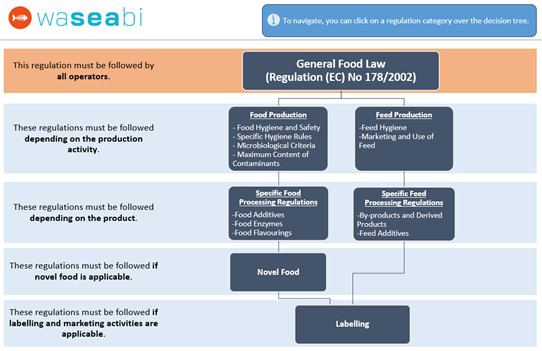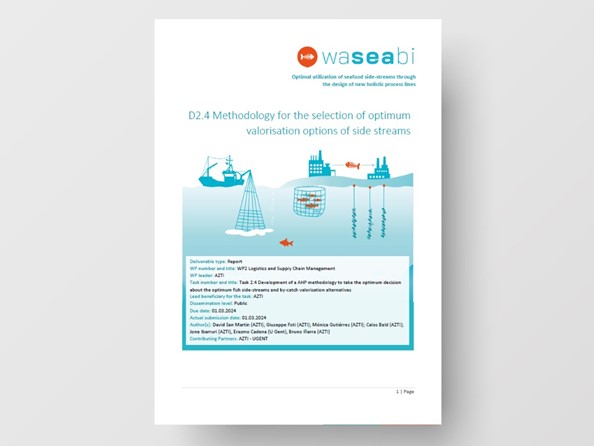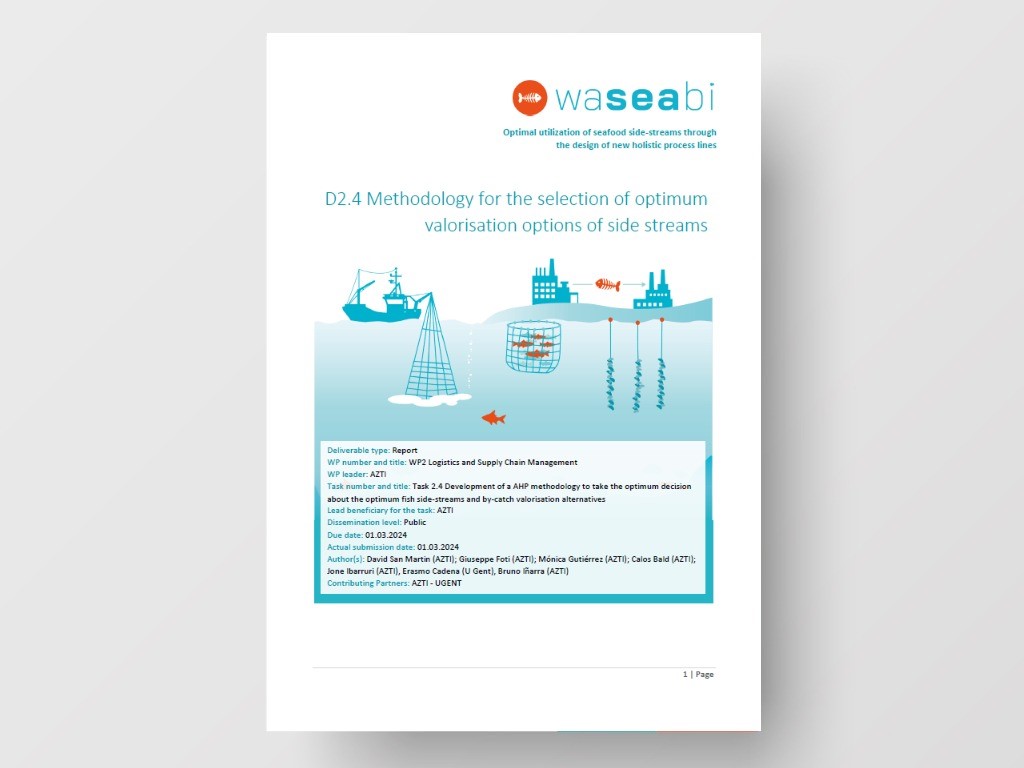Tools & guidelines for a better exploitation of seafood side-streams
In this section you will find a selection of practical tools and guidelines intended for representatives from the seafood industry, who want to achieve a better exploitation of their seafood side-streams. All the available materials have been developed by the WaSeaBi project partners.
Scale-up of the savory compound’s recovery from Mussel cooking production
The mussel procesing requires large quantity of water and in turn generates effluents (300-400 litres of brines per ton of processed mussels). WaSeaBi aims to recuperate Mussel cooking water to extract valuable compounds for savoury ingredients purposes.
In this video you can see how this is done.
Biorefinery of solid residual side stream for active biopeptide production
Hake bycatches account up to 30 % of hake catches that cannot be used for direct human consumption. WaSeaBi aims to search for high-value options such as bioactive peptide production. We have therefore worked on optimization of enzymatic hydrolysis for the production of bioactive peptides: from laboratory to pilot scale.
In this video you can see how bioactive peptides are obtained from hake bycatches.
Use of solid residual side stream for Flavouring agent production
Salmon by-products are currently processed to obtain fishmeal and oil. However, some of them could find much higher valuable options when processed into flavouring agents or hydrolysates with bioactive properties.
In this video you can see the process of producing salmon flavours.
Recovery of nutrients from cod processing water using flocculation technique
Significant amount of nutrients such as protein, lipid, antioxidants are leaking to the process waters during processing of seafood. In WaSeaBi, our aim is to recover valuable nutrients using food-grade technique upon which the recovered materials are suitable to be used for higher purposes, i.e, food/feed ingredient.
This video demonstrates the flocculation technique used for the recovery of nutrients from cod processing water generated during processing of cod at Jeka fish.
Recovery of nutrients from herring processing water using flocculation technique
Significant amount of nutrients such as protein, lipid, antioxidants are leaking to the process waters during processing of seafood. In WaSeaBi, our aim is to recover valuable nutrients using food-grade technique upon which the recovered materials are suitable to be used for higher purposes, i.e, food/feed ingredient.
This video demonstrate the flocculation technique used for the recovery of nutrients from processing water generated during processing of herring at Sweden Pelagic AB.
Using the pH-shift process for valorisation of seafood side-streams
In order to produce functional protein ingredients from complex bony raw materials such as fish filleting side-streams, the so-called pH-shift process is a promising technique, which is now evaluated in the WaSeaBi-project.
Dipping solution significantly extends the side streams’ shelf life
When herring are filleted, more than half their weight becomes a low-value ‘side stream’ that never reaches our plates – despite being rich in protein and healthy omega-3 fatty acids.
Now, scientists from Chalmers University of Technology, Sweden, within the frame of the project WaSeaBi, have developed a special dipping solution, with ingredients including rosemary extract and citric acid, which can significantly extend the side streams’ shelf life, and increase the opportunities to use them as food.
Watch the video and learn more here.
EU regulatory guideline tool
The objective of this guidance tool is to help industry stakeholders involved in the project and beyond to navigate and exploit the regulatory landscape and promote the successful implementation of innovative solutions related to the valorization of seafood side-streams (solid and liquid). In this regard, the tool describes the regulatory assessment carried out to ensure the compliance of the proposed innovative solutions with EU policies and regulations.
The decision tree sheet facilitates navigation within the regulatory landscape. Here, relevant regulations are categorized according to production activity (i.e. food and feed). This tool provides an overview of the regulations; however, the complete and updated version of the regulations can be accessed through the EUR-Lex database provided in this file.
Choosing the right valorisation option
WaSeaBi has developed a methodology to select among the studied valorisation options a strategy for different side-streams based on a multicriteria decision analysis (MCDA) methodology. Analytic Hierarchy Process (AHP) was selected as the more appropriate approach. The AHP methodology can help to take the optimum decision about the different fish residual streams valorisation strategies based on 1) their potential for being converted to high value products and 2) potential synergies with other fish residual side-streams generated close to them.
Regarding the potential for obtaining high value products, this methodology identifies and establishes the relative importance of the most important technical, legal, economic, and environmental viability factors for each valorisation alternative, and it develops the decision matrixes and rules with the corresponding algorithms and functions to take right decision about a valorisation strategy. In addition, it considers the potential synergies with other fish residual side-streams by considering the implication of adding them to the single scenario: quantities, logistics implications, etc. More information is available in this document.
If you are interested in applying this methodology to your side-streams, please contact info@azti.es with a mention to the “WaSeaBi-AHP”.


